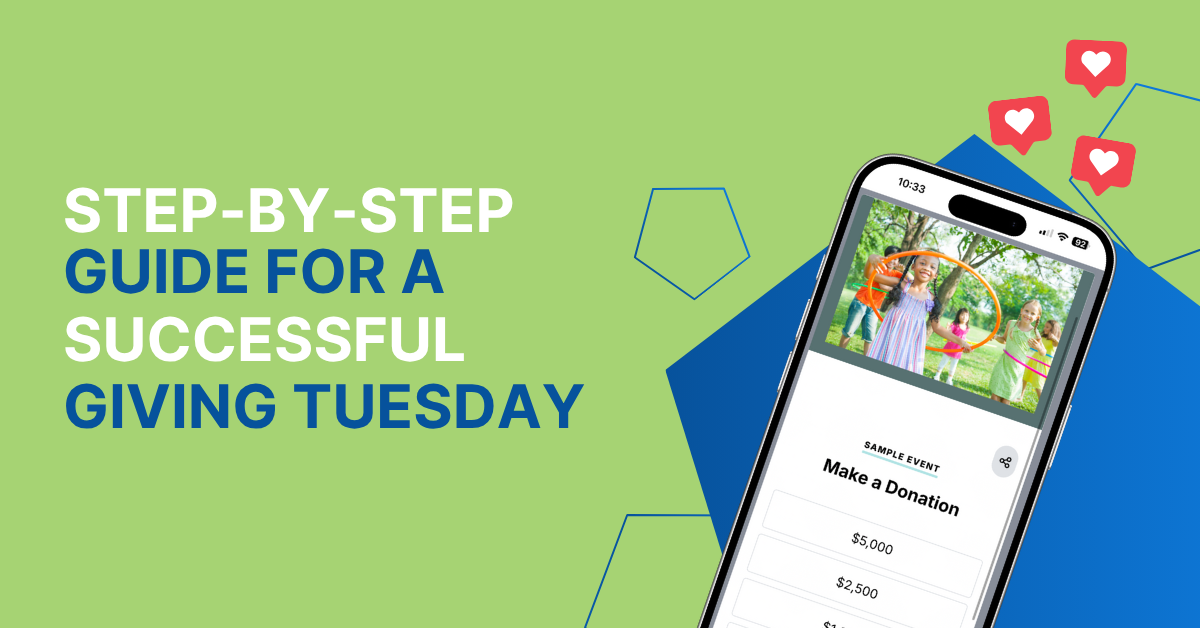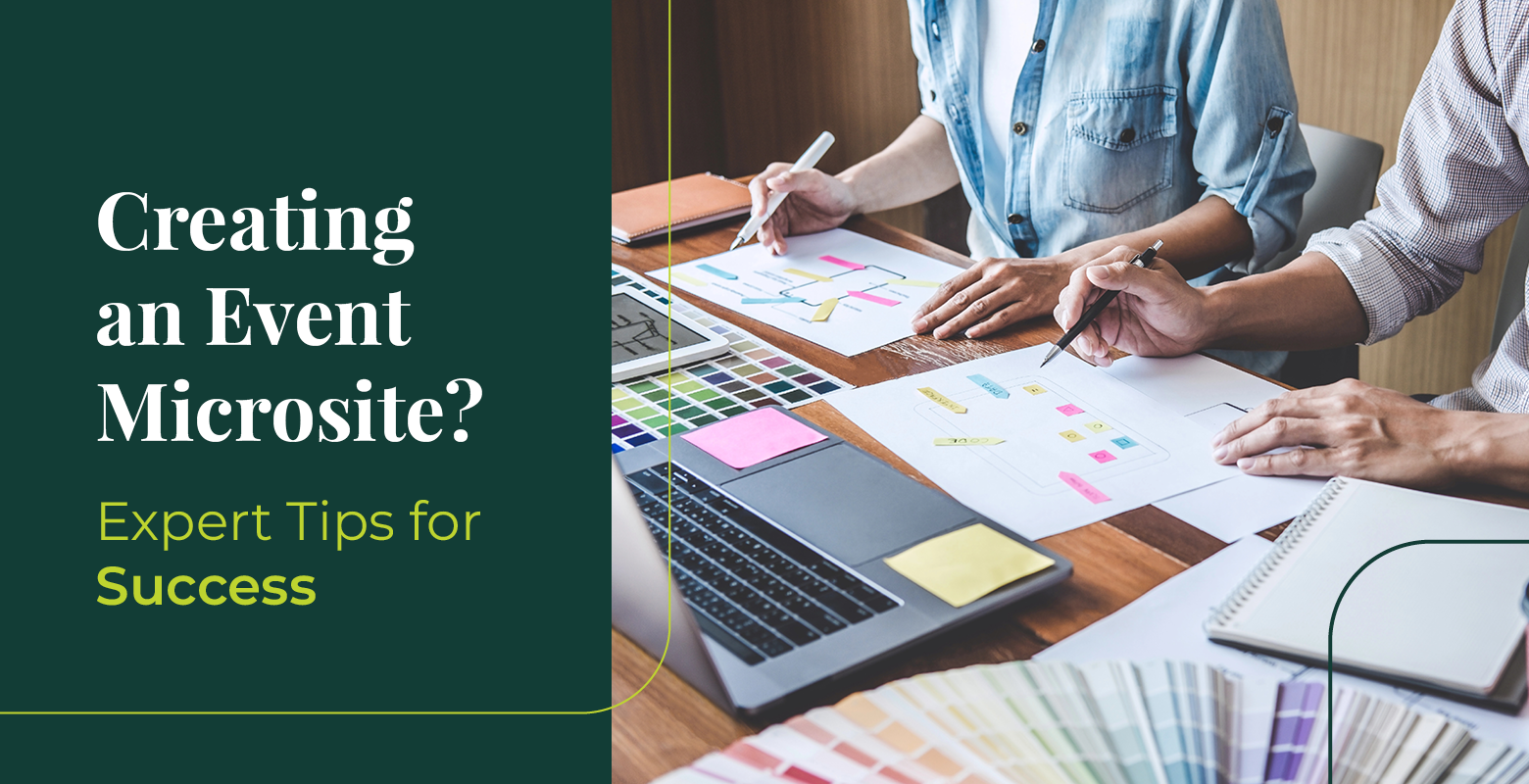
Promoting Events via Email: 3 Fundamental Tech Strategies
April 20, 2022
Nonprofit events come in all shapes and sizes, from lavish galas to casual gatherings, online auctions to 5k marathons. But there’s one constant between all events your nonprofit might host—they rely on attendance to succeed.
Without attendees, your events won’t have the desired impact, whether that’s revenue generation through registrations and sponsorships or simply raised awareness and visibility for your mission.
There are tons of ways to promote nonprofit events, many of which you probably already use to get your exciting offerings in front of donors, partners, and community members. Email remains one of the most tried and true promotional outlets because it’s so direct: your messages and invitations are sent straight to the recipient’s inbox.
But are recipients actually engaging with your emails in ways that translate to successful event turnout? Are you making the most of email and using modern strategies to ensure your invitations stand out to your supporters?
In this quick guide, we’ll review three fundamental digital advertising strategies you’ll need in your back pocket to master promoting events via email.
-
Understand and define your audience.
You wouldn’t send the same direct mail appeal to every donor in your database. If you did, the number of donors you reach who are unlikely to give or are simply inactive would be a waste of time and money. You’d expend more resources conducting the appeal than you’d generate in incoming donations.
This is a simple example, but it illustrates the importance of understanding and defining your audience whenever you’re promoting a specific campaign or event through any medium.
Start by thinking about your promotional goals. Depending on the type and scale of your event, you might have a few. You could seek to generate a specific number of:
- Registrants
- Individual donations (or a total donation amount)
- Sponsorship or vendor sign-ups at various tiers
From here, you can begin narrowing down your audience through segmentation, or sorting your contacts by specific markers like their location or history of engagement with your organization. Modern donor management systems (DMS) or customer relationship management (CRM) software should include built-in features to develop segmented contact lists, but it’s important to note that your own data hygiene methods and the amount of data you actively track will impact the effectiveness of the segments that you create.
Now, consider who your target audience is based on your goals. Donors? Members? Potential sponsors? Large-scale events may have multiple target audiences. For instance, an association event might have both members and sponsors while a fundraising event might want to use different messaging for its donors by their giving levels.
From here, refine your segmentation strategy by drilling down further. Let’s say you’re targeting donors to promote an upcoming multi-day online auction and hybrid gala. Sort your donors into more targeted sub-audiences like those who:
- Give above a certain average donation amount
- Have actively given in the past six months
- Haven’t actively given in the past six months and need to be reactivated
- Attended your last event
- Have never attended an event before
- Live close enough to attend the in-person gala
- Don’t live close by and could attend the virtual gala activities
- Are good prospects for the next mid-level or major giving level
The number of subgroups you identify within your broader donor segment will vary based on the scope of your promotional efforts. However, this step is useful because it allows you to start tailoring your messaging in ways that will best resonate with donors based on their engagement histories and preferences.
Try this exercise: Work through the list of donor groups above and consider how you’d ask each to register for your auction and gala. How would you frame messages to loyal event attendees vs. newcomers? How would you ask lower-level donors to join the online event? How would you ask mid-level and major donors to join the in-person gala?
Understanding and segmenting your audience is a foundational tactic for all types of digital marketing for nonprofits, so it pays to do your homework! Give this first step plenty of thought whenever you sit down to develop your next promotional strategy.
-
Create email mapping campaigns to drive attendee journeys.
As you develop segments of potential attendees to target with your emails, consider the “journeys” they’ll take along the way to registering for your event. They’ll first encounter or hear about your event somewhere (like on social media), and then you’ll need to keep it on their minds by creating multiple touchpoints or impressions. Each impression should get your readers closer to deciding to register, which ends the marketing journey.
All of these touchpoints or impressions don’t have to be (and shouldn’t be) via email. Sending that many email reminders can actually backfire and cause recipients to tune you out entirely. This is why standard practice today involves multichannel marketing—reaching your target audience through coordinated messaging on multiple marketing outlets in order to funnel them through their journey.
We recommend pairing promotional emails with digital ads in a multichannel event marketing campaign. To accomplish this, you’ll want to use email mapping.
Serving retargeting ads to your supporters and potential supporters typically requires them to have first visited your website. But email mapping allows you to reach your email contacts (even unsubscribers) with display ads for your event regardless of whether they’ve been on your website yet. Here’s how your potential attendees might experience the process:
- You send an initial announcement email to a segmented mailing list.
- Typically, only around 20% of recipients will open your email and an even smaller number will actually sign up.
- Anyone who didn’t open or register for the event will then start tosee ads for your event across the web while they read the news, check the weather, scroll through their social feeds, etc.
- You send another promotional or reminder email, and the process continues.
- Your recipients keep encountering your event in a variety of places, so they’re primed to register or click through to learn more when you send a “Register Now!” email later.
By creating reminders in multiple places, you can keep your event on your audience’s minds without bombarding them with too many emails.
This also allows you to further tailor your messaging for each journey based on what various segments find appealing about your event. For example, emails and ads shown to donors should reinforce the fun and impact they’ll have by attending, and messages to potential sponsors should touch on the visibility and reach they’ll receive through your sponsorship opportunities. Then, when the time is right, a compelling “Register Now” call-to-action email (maybe backed up with a special deal or perk) should clinch the deal and result in a new sign-up for your event!
Email mapping and multichannel campaigns might sound complicated for nonprofits new to this style of marketing, but getting started is easy with the right software. Today’s marketing and advertising platforms designed for nonprofits allow you to easily import segmented mailing lists, design journeys for each of them, configure your display ads, and fit them all together into multichannel email mapping campaigns.
3. Develop tailored, user-friendly landing pages.
The last step in your audiences’ journeys is undoubtedly the most important. At this point, your multi-channel ads and targeted emails have piqued their interest, and they click through to your registration page to sign up. A couple of results could occur at this critical juncture. Your audience members could:
- Complete the registration process
- Decide that your event’s not for them
- Begin learning more and start to register but get distracted, click away, or give up halfway through the process
You might think that at this stage their decisions are out of your hands. Not true! After all the hard work that went into stewarding your audience up to this point, you’ll need to put in a bit more thought and strategy to make sure you don’t lose them at the last minute.
Your landing pages, the web pages that recipients click through to from your emails and ads and that facilitate the registration process, play a critical role in boosting results. The quality of the experience you offer on these landing pages directly impacts your ultimate conversion rate (successful registrations) and abandonment rate (unsuccessful registrations).
Thankfully, there are many marketing and web design best practices for landing pages that you can rely on. Here are a few of the most important:
- Tailor the content of your landing pages to each audience segment/journey.
-
-
- Again, tailoring your messaging to each segment of your audience is key. When users click through to your landing page, they should be greeted with words and images that are highly relevant to why they’d want to register for your event. Create separate landing pages for each group so that you can really focus on tailoring your message and call to action.
-
- Anticipate your audience’s needs and questions.
-
-
- Think about what your audiences may want to learn more about before registering. Donors might want to learn about their hybrid and virtual attendance options or how your virtual gala will work, while potential sponsors might immediately look for stats about your audience and impact. Provide this information upfront to keep users on the landing page once they arrive.
-
- Use impactful, clear, uncluttered design.
-
-
- The visual design of your landing pages should never get in the way of their core purpose: convincing users to complete the target action and then facilitating that action. Simple designs that evoke your brand and include impactful imagery will work best.
-
- Keep the registration and payment process quick and easy.
-
-
- Any slowdowns or unnecessary complications in the registration process can cause your abandonment rate to spike. Keep the process fast and streamlined. Auto-fill information whenever possible and ask only for the most necessary and relevant information. You can always follow up for more details once the actual registration has been secured.
-
- Track engagement metrics in real time.
-
- Make sure you’re able to track key engagement metrics, like click-throughs, bounce rates, completed registrations, and registration abandonment, in real time. Marketing software should make this process easy. This is another reason why we recommend creating separate landing pages for each audience segment—your incoming data will be crystal clear and show you exactly where you need to make improvements.
The bottom line is to keep your landing pages simple. Remember your audience journeys and what they’ll find appealing about your event, and hone in on that core message. This level of focus (backed up with uncluttered web design and a seamless registration process) will help to boost conversion rates.
And to really go the extra mile, consider one of the Feathr team’s favorite marketing ideas: retargeted ads. Set up a few extra steps in your journeys to retarget users who abandon the registration process with a few more ads tailored just to them. Users who are retargeted are 43% more likely to ultimately convert, so these final impressions are worth the effort to create.
These three fundamental tech strategies are essential for running highly effective, modern email campaigns whether you’re promoting an event, campaign, or any other initiative. They revolve around a few key themes—audience specificity, multichannel journeys, and streamlined user experiences. Anchoring your approach with these concepts will serve you well.
If you’re new to this type of tech-savvy marketing, remember that advertising software designed for nonprofits can take all of the guesswork out of the process. Best of all, once you’re up and running with your first email strategy and multichannel ads, you can keep learning and building upon your successes for future events without needing to start from scratch.
Get The Latest Updates
Subscribe To Our Monthly Newsletter
No spam, notifications only about new products, updates.
Become a subscriber
Subscribe to our blog and get the latest updates straight to your inbox.

